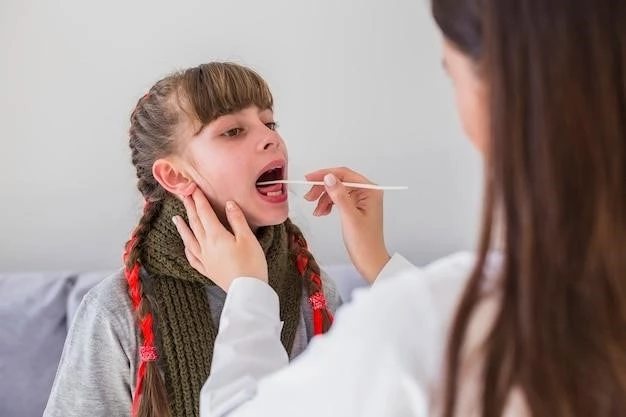Introduction to Recurrent Laryngeal Papillomas
Recurrent Laryngeal Papillomas, also known as Recurrent Respiratory Papillomatosis (RRP), are benign tumors caused by human papillomavirus (HPV) affecting the respiratory tract. These growths primarily occur in the larynx and can lead to voice disturbances and respiratory issues.
Recurrent Laryngeal Papillomas, also known as Recurrent Respiratory Papillomatosis (RRP), are benign tumors caused by human papillomavirus (HPV) affecting the respiratory tract. These growths primarily occur in the larynx and can lead to voice disturbances and respiratory issues. RRP is a rare condition that affects both children and adults, with a challenging course due to the recurrent nature of the papillomas. Diagnosis of RRP involves laryngoscopy and biopsy, while treatment often entails surgical excision of the papillomas to alleviate symptoms and maintain airway function.
Recurrent Laryngeal Papillomas Overview
Recurrent Laryngeal Papillomas, also known as Recurrent Respiratory Papillomatosis (RRP), are benign tumors caused by human papillomavirus (HPV) affecting the respiratory tract. These growths primarily occur in the larynx and can lead to voice disturbances and respiratory issues. RRP poses a rare challenge due to its recurring nature, requiring ongoing management to alleviate symptoms and maintain airway function.
Recurrent Laryngeal Papillomas are caused by the human papillomavirus (HPV), particularly HPV types 6 and 11. These benign tumors primarily affect the respiratory tract, with the larynx being a common site for growth. The spread of HPV through direct contact is a key factor in the development of these papillomas, often leading to recurrent growths in the affected areas.
Symptoms of Recurrent Laryngeal Papillomas
Common symptoms of Recurrent Laryngeal Papillomas include hoarseness, difficulty breathing, chronic cough, and recurrent respiratory infections. In severe cases, patients may experience airway obstruction, voice changes, and swallowing difficulties. These papillomas can also cause vocal cord damage and may require multiple surgeries to manage the symptoms effectively.

Diagnosis and Treatment
The diagnosis of Recurrent Laryngeal Papillomas often involves laryngoscopy to visualize the growths in the larynx and biopsy to confirm the presence of papillomas. Treatment options generally include surgical excision to remove the papillomas and alleviate symptoms. Additional management strategies may focus on maintaining airway patency and preserving vocal function.
Diagnosis of Recurrent Laryngeal Papillomas
Diagnosing Recurrent Laryngeal Papillomas often involves laryngoscopy, where the growths in the larynx are visualized, followed by a biopsy to confirm the presence of papillomas. Medical professionals may also use imaging tests like CT scans to assess the extent of the papillomas in the respiratory tract.
Causes of Recurrent Laryngeal Papillomas
The primary cause of Recurrent Laryngeal Papillomas is the human papillomavirus (HPV), specifically HPV types 6 and 11. These benign tumors typically develop in the respiratory tract, with a predilection for the larynx. The transmission of HPV through direct contact is a key factor in the formation of these recurrent papillomas in the affected areas.

Prognosis and Complications
Recurrent Laryngeal Papillomas pose challenges due to their recurrent nature, potentially leading to complications such as airway obstruction, voice alterations, and swallowing difficulties. Effective management strategies play a crucial role in addressing these complications and improving the prognosis of individuals affected by this condition.
Prognosis of Recurrent Laryngeal Papillomas
The outlook for patients with Recurrent Laryngeal Papillomas varies depending on the severity of the condition and the effectiveness of treatment. While these papillomas are benign, the recurrent nature of the growths can lead to complications such as airway obstruction and voice changes, influencing the long-term prognosis of individuals affected by this disease.
Complications Associated with Recurrent Laryngeal Papillomas
Complications of Recurrent Laryngeal Papillomas can include airway obstruction, voice alterations, swallowing difficulties, and the need for multiple surgical interventions. These benign tumors, caused by human papillomavirus, can lead to significant challenges in managing respiratory health and preserving vocal function.
Recurrent Laryngeal Papillomas are classified as a rare condition with an estimated incidence of approximately 1.8 cases per 100,000 adults and 4.3 cases per 100,000 children. These benign tumors predominantly affect the larynx and are associated with human papillomavirus (HPV) infection, posing challenges in both the pediatric and adult populations.
Common Risk Factors for Developing Recurrent Laryngeal Papillomas
Development of Recurrent Laryngeal Papillomas is often associated with risk factors such as human papillomavirus (HPV) infection, particularly HPV types 6 and 11. Factors like direct contact with the virus, compromised immune function, and exposure to HPV-infected individuals can increase the likelihood of developing these benign tumors in the respiratory tract, primarily affecting the larynx.
Epidemiological Data on Recurrent Laryngeal Papillomas
Recurrent Laryngeal Papillomas, caused by human papillomavirus (HPV), are a rare respiratory condition with an estimated incidence of approximately 1.8 cases per 100,000 adults and 4.3 cases per 100,000 children annually. These benign tumors commonly affect the larynx, presenting challenges in both adult and pediatric populations.
Preventive Measures for Recurrent Laryngeal Papillomas
Prevention strategies for Recurrent Laryngeal Papillomas focus on minimizing exposure to human papillomavirus (HPV) through safe sexual practices, vaccination against HPV, and maintaining optimal immune health. Additionally, avoiding smoking and reducing alcohol consumption can help lower the risk of developing these benign tumors in the respiratory tract.
Managing Recurrent Laryngeal Papillomas involves a multidisciplinary approach focusing on timely surgical interventions to remove the papillomas, voice therapy to address any functional changes, and regular follow-up assessments to monitor disease progression. Additionally, ongoing surveillance for recurrence and optimizing immune health are essential components of managing this condition effectively.
Effective Management Strategies for Recurrent Laryngeal Papillomas
This is the information I have found pertaining to ″Recurrent Laryngeal Papillomas.″ Thank you!
